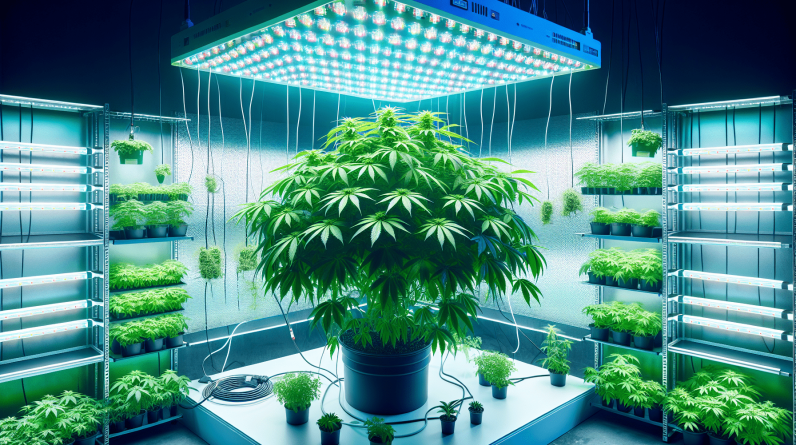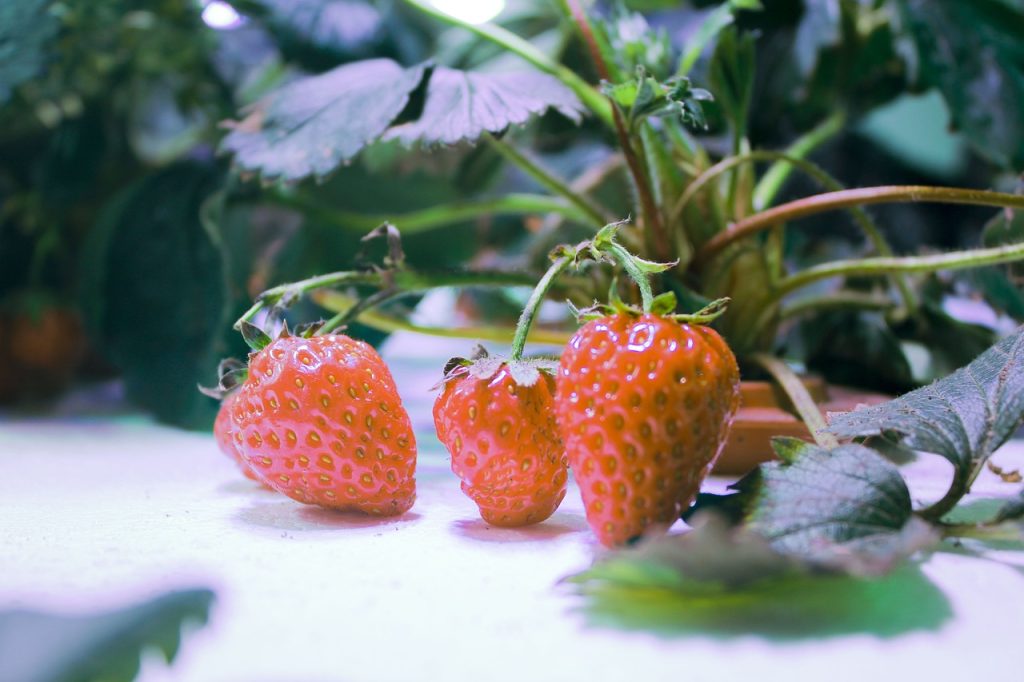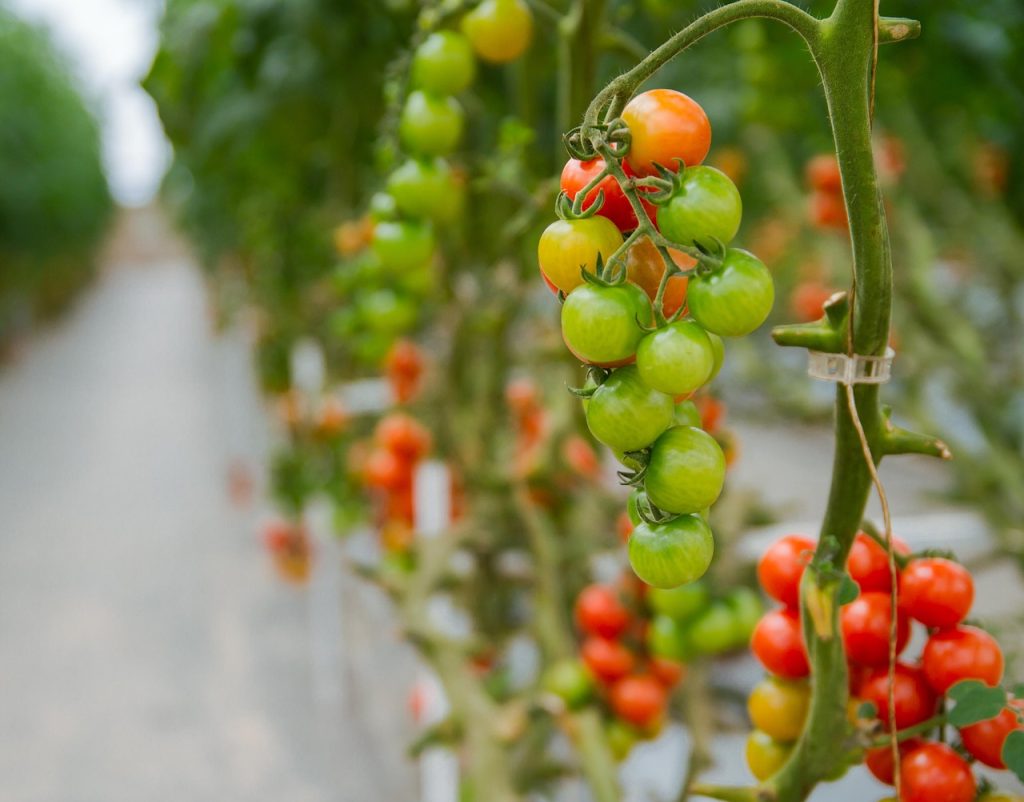
Understanding Hydroponic Lighting
If you’re considering venturing into hydroponic gardening, one crucial aspect to understand is the role of hydroponic lighting in your plant’s growth. Hydroponic lighting is essential for providing the necessary light spectrum for plants to carry out photosynthesis efficiently. This article will guide you through everything you need to know about hydroponic lighting before you embark on your hydroponic growing journey.

What is Hydroponic Lighting?
Hydroponic lighting refers to the artificial source of light used to simulate natural sunlight for plants grown in hydroponic systems. Unlike traditional soil gardening, where plants receive natural sunlight, hydroponic setups require artificial lighting to ensure plants receive the proper spectrum of light for optimal growth.
Why is Hydroponic Lighting Important?
In hydroponic gardening, lighting plays a vital role in the growth and development of plants. Since plants lack access to natural sunlight, hydroponic lighting serves as a substitute to promote photosynthesis, which is crucial for plant growth. Without adequate lighting, plants may struggle to thrive, resulting in stunted growth, poor yields, and nutrient deficiencies.
Types of Hydroponic Lighting
There are several types of hydroponic lighting available, each with its unique purposes and benefits. The most common types of hydroponic lighting include:
- Fluorescent Lights: Ideal for seedlings and young plants due to their lower intensity and cooler temperatures.
- High-Intensity Discharge (HID) Lights: Deliver intense light output, making them suitable for flowering and fruiting plants.
- Light-Emitting Diodes (LEDs): Energy-efficient and versatile lighting option suitable for all growth stages of plants.
- Metal Halide (MH) Lights: Emit a blue spectrum of light, promoting leafy growth in plants.
- High-Pressure Sodium (HPS) Lights: Emit a red spectrum of light, beneficial for flowering and fruiting stages of plants.
Each type of hydroponic lighting caters to specific plant requirements, such as growth stage, light intensity, and spectrum needs. It’s essential to choose the right lighting option based on your plants’ needs to ensure optimal growth and productivity.
Factors to Consider When Choosing Hydroponic Lighting
When selecting hydroponic lighting for your indoor garden, several factors must be considered to meet your plants’ requirements effectively. Some key factors to consider include:
- Light Spectrum: Ensure the lighting source provides an appropriate spectrum for your plants’ growth stage.
- Light Intensity: Consider the light output required based on the size of your growing area and plant light requirements.
- Energy Efficiency: Choose lighting that is energy-efficient to reduce operating costs and environmental impact.
- Heat Output: Consider the heat generated by the lighting system and its impact on temperature regulation within your growing environment.
- Durability and Lifespan: Opt for lighting fixtures that are durable and have a long lifespan to minimize replacement costs.
- Cost: Evaluate the initial cost and long-term expenses associated with the lighting system to determine its affordability.
By considering these factors, you can select the most suitable hydroponic lighting for your plants, ensuring optimal growth and productivity in your hydroponic system.

Setting Up Hydroponic Lighting System
Once you have chosen the appropriate hydroponic lighting for your indoor garden, it’s essential to set up the lighting system correctly to maximize its effectiveness. Here are some tips for setting up your hydroponic lighting system:
- Positioning: Ensure the lighting fixtures are placed at the correct height and angle to provide uniform light distribution to all plants.
- Light Schedule: Establish a consistent light schedule based on your plants’ light requirements, ensuring they receive the necessary light duration per day.
- Distance: Maintain the optimal distance between the lighting source and plants to prevent light burn or insufficient light exposure.
- Light Reflectors: Use reflective materials or light reflectors to maximize light efficiency by redirecting light towards plants and minimizing light loss.
By following these guidelines, you can set up your hydroponic lighting system effectively, creating an optimal growing environment for your plants to thrive.
Preventing Light Stress in Hydroponic Plants
While adequate light exposure is crucial for plant growth in hydroponic systems, excessive light can lead to light stress, negatively impacting plant health. Light stress in plants can manifest as burnt leaves, stunted growth, and reduced yields. To prevent light stress in hydroponic plants, consider the following strategies:
- Gradual Adjustment: Gradually introduce plants to new lighting conditions to acclimate them to the intensity and spectrum of light.
- Light Intensity Control: Adjust light intensity based on plant requirements and growth stage to prevent excessive light exposure.
- Light Spectrum Selection: Choose lighting sources with appropriate spectrums for specific growth stages to avoid light stress.
- Light Duration Regulation: Monitor and adjust the duration of light exposure to avoid overexposure, especially during sensitive growth stages.
By implementing these strategies, you can prevent light stress in your hydroponic plants, ensuring healthy growth and optimal yields in your indoor garden.

Maintaining and Troubleshooting Hydroponic Lighting System
To ensure the longevity and efficiency of your hydroponic lighting system, regular maintenance and troubleshooting are essential. Here are some tips for maintaining and troubleshooting your hydroponic lighting system:
- Cleanliness: Regularly clean lighting fixtures, reflectors, and lenses to remove dust and debris that may obstruct light output.
- Bulb Replacement: Replace old or damaged bulbs promptly to maintain optimal light output and prevent diminished performance.
- Cable Inspection: Check electrical cables and connections for any signs of wear or damage, ensuring safe and reliable operation.
- Ballast Check: Test ballasts regularly to ensure they are functioning correctly and providing consistent power to lighting fixtures.
- Temperature Monitoring: Keep track of temperature levels around lighting fixtures to prevent overheating and ensure a stable growing environment.
By staying proactive with maintenance and promptly addressing any issues, you can prolong the lifespan of your hydroponic lighting system and optimize plant growth in your indoor garden.
Conclusion
In conclusion, understanding the importance of hydroponic lighting and selecting the right lighting system for your plants are crucial steps in achieving successful hydroponic gardening. By considering factors such as light spectrum, intensity, and energy efficiency, you can create an optimal growing environment for your plants to thrive. Setting up and maintaining your hydroponic lighting system correctly will ensure healthy growth, high yields, and sustainable gardening practices in your indoor garden. Now that you know what you should about hydroponic lighting, you’re well-equipped to embark on your hydroponic growing journey with confidence.
Related Content
- How Do You Speed Up Plant Growth In Hydroponics?
- The Ultimate Guide to Hydroponic Lighting Setup 2025: 7 Effective Strategies for Best Results
- How to Grow Fresh Vegetables Indoors Using Hydroponics
- 10 Effective Hydroponic Gardening Tips for a Thriving 2025 Garden
- 10 Effective Hydroponics at Home Tips for a Fresh 2025 Garden










